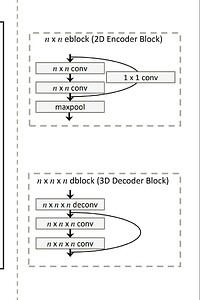Hello Everone. I am working on 3D image reconstruction using a single image. Now
I have trained my model but it’s not working. Due to the lack of guidance in 3D, I can’t figure out the error. Please help me if there is some error in my approach to training.
First, let me explain what I am following.
1.I have taken synthetic dataset(I am uploading the mini dataset for 1 type of object per class).
Dataset-
https://drive.google.com/open?id=1AMjKQUujUlNSRRqnoKsJSteNed9mTEiI
2.I have taken 4 classes(objects) with 100 different types of objects per class.
- Each object is having 24 images where all these 24 images have one binvox file.
3.so I have associate each image with its 3D model separately.
For eg ->we have one chair class.Lets take a type of chair which have 24 images and one 3D model.
So I associate each of the image with 3D model.
4.Now I put them into traning with a batch size of 24 without shuffling.
5.Learning rate,loss is according to your paper.
6.after training to 50 epochs my average loss reduces from 11.92 to 4.76.
As I check after training, my model is outputting the same output for all the classes.
7.i have also used batch normalisation with Xavier initialisation.
8.after training to test I have taken argmax(returns indices of max value) along the depth or channel dimensions(dim=1).
My input shape-[400,24,128,128,3] to the model.
(Here 400 means 4 classes *100 different objects per class)
Output by model something like-[24,2,32,32,32]
After argmax -[24,32,32,32]
This is all I have done.
Please rectify me if I have done something wrong in preparation of dataset(or I have to extend my dataset by getting more images or augmentation). Or there is a different way to train these types of models. Or at argmax.
Here is the given model and training code–
n_epochs = 10
#model=model.cuda()
model.train()
train_loss = 0.0
for epoch in range(1, n_epochs+1):
print("number of epoch" ,epoch)
print("ALL ABOUT LOSS(training)--------",(train_loss/(500)),"----------/n")
train_loss = 0.0
model.train()
for i in range(len(arr)):
data=arr[i].cuda()
tar=arr_3d[i].cuda()
tar=tar.long()
optimizer.zero_grad()
output=model(data)
loss = criterion(output, tar)
loss.backward()
# perform a single optimization step (parameter update)
optimizer.step()
# update training loss
train_loss += loss.item()*data.size(0)
if(i%100==0 and i!=0):
scheduler.step()
print(scheduler.get_lr())
Model –



